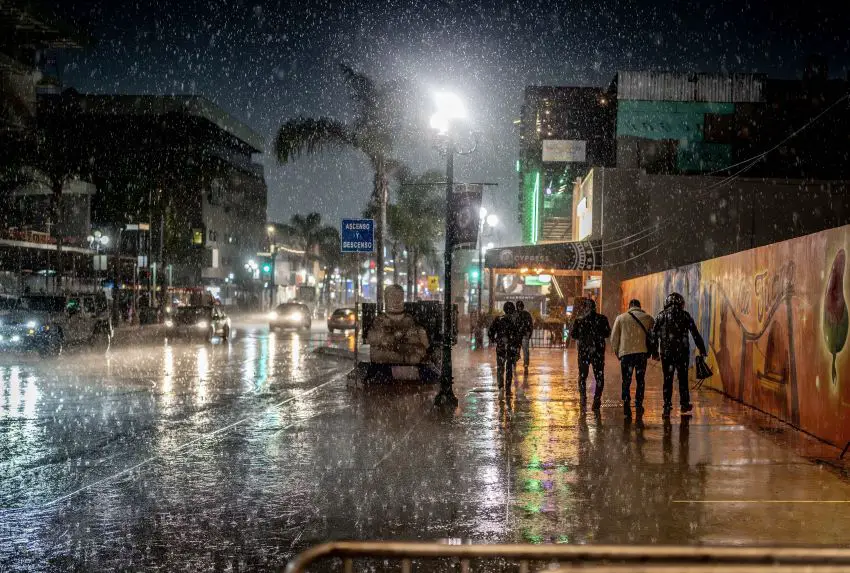Solstice brings second winter storm of the season

The second winter storm of the season is predicted to hit northwest Mexico this Thursday, bringing torrential rains to the Baja California peninsula.
According to the National Meteorological Service (SMN), the storm is due to cold front number 19 interacting with low-pressure bands in the middle and upper atmosphere – on the same day that the winter solstice marks the official beginning of winter.
The storm will cause intense rains (75-150mm) in Baja California and heavy rains (25-50mm) in Baja California Sur, Chihuahua and Sonora. Wind gusts of up to 70 kilometers per hour are predicted throughout the Baja California peninsula, with a chance of tornados, waves 2-3 meters high, and snowfall overnight. Gusts of up to 60 kilometers per hour will hit the states of Chihuahua and Sonora.
The day will also be wet across much of the northern and eastern parts of the country, where scattered showers and light rain are forecast. Wind gusts of up to 80 kilometers per hour and waves 2-3 meters high are forecast for the Gulf of Tehuantepec.
Temperatures below and around freezing will continue across Mexico’s mountainous regions, dropping as low as -10 degrees Celsius in Chihuahua, Durango, Hidalgo, Puebla and Veracruz.
On the other end of the spectrum, maximum temperatures will reach 40 degrees Celsius in parts of Guerrero and Michoacán, and 35 degrees Celsius in northeast Durango, southern Sinaloa, and the coasts of Chiapas and Oaxaca.
In Mexico City, temperatures will range between 4 and 24 degrees Celsius, with cloudy skies and fog during the morning clearing towards the afternoon. The astronomical solstice is timed for 9:27 in the evening.
Mexico News Daily
Source: Mexico News Daily

